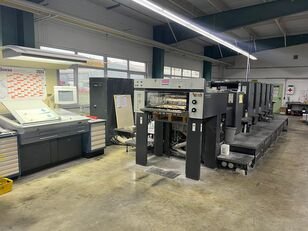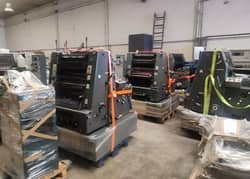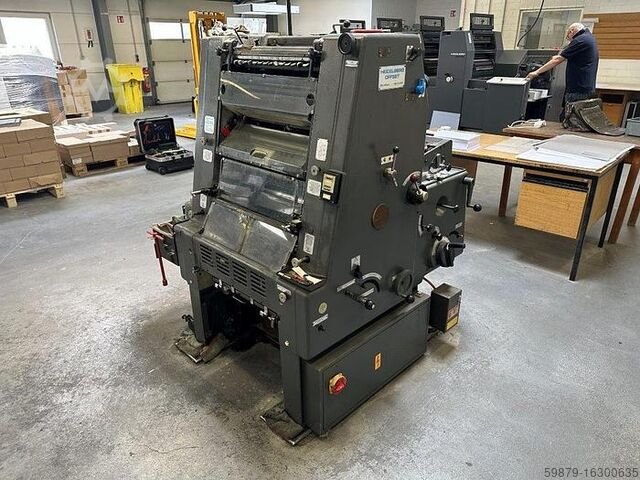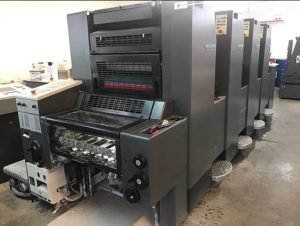Table of Contents
What are the machines used for printing?
Printing Equipment for Sale, Digital (inkjet) Printers (Short to medium run) Screen Printers (Large volume) Flexographic Printing Machine (large volume) Offset Printers.
What technology is used in printing?
Printing Equipment for Sale, There are three fundamental printing technologies used in a desktop label printer: Water Based Inkjet (WBIJ), Electro photographic (EP), and Thermal Transfer (TT).
How many types of printing business are there?
Printing Equipment for Sale, The printing industry offers a diverse range of opportunities, from traditional offset printing to digital printing, screen printing, large-format printing, and more. However, with so many options available, it’s natural to feel unsure about which type of printing business to pursue.
How does a printing press work?
Printing Equipment for Sale, Printing Equipment for Sale, A printing press is a mechanical device for applying pressure to an inked surface resting upon a print medium (such as paper or cloth), thereby transferring the ink.
How to start up a printing business?
- Printing Equipment for Sale,
- Determine the Type of Services Offered. …
- Choose the Equipment and Supporting Equipment Needed. …
- Determine the Target Market. …
- Determine the Location. …
- Prepare Printing Business Capital. …
- Promote Vigorously. …
- Maintain Service Quality.
Benefits of choosing used industrial printing equipment over the new one.


 Printing Equipment for Sale, Choosing used industrial printing equipment over new can offer several benefits, particularly for businesses looking to balance cost and functionality. Here are some key advantages:
Printing Equipment for Sale, Choosing used industrial printing equipment over new can offer several benefits, particularly for businesses looking to balance cost and functionality. Here are some key advantages:
1. Cost Savings
- Lower Purchase Price: Printing Equipment for Sale, Used equipment is typically much cheaper than new, which can be a significant advantage for businesses with limited budgets.
- Reduced Depreciation: Printing Equipment for Sale, New equipment loses value quickly, especially in industries with rapid technological advancements. Used equipment has already undergone this initial depreciation.
2. Immediate Availability
- Faster Acquisition: Printing Equipment for Sale, Used equipment is often available for immediate purchase and installation, reducing downtime compared to waiting for new equipment to be manufactured and delivered.
3. Value for Money
- High Quality for Lower Price: Often, used equipment can be purchased at a fraction of the cost of new, even if it’s a high-quality model that was expensive when new.
4. Proven Performance
- Track Record: Printing Equipment for Sale,Used equipment has a track record of performance, which can provide more insight into its reliability and longevity compared to new equipment with unknown long-term reliability.
5. Reduced Risk of Rapid Obsolescence
- Stability: Used equipment might be more stable in terms of technology, making it a reliable choice if the technology hasn’t changed dramatically. This is particularly relevant for well-established printing technologies.
6. Lower Insurance Costs
- Insurance Savings: Insurance premiums for used equipment are often lower compared to new equipment, which can contribute to overall cost savings.
7. Potential for Customization
- Modification Options: Older equipment might be more easily modified or adapted to fit specific needs, particularly if it’s a well-supported model.
8. Environmental Considerations
- Sustainability: Buying used equipment is an environmentally friendly choice as it reduces waste and extends the lifecycle of existing machinery.
9. Flexibility
- Trial and Testing: Used equipment allows businesses to test new processes or enter new markets without the significant financial commitment of new machinery.
10. Established Support and Parts Availability
- Maintenance and Parts: For well-known models, spare parts and technical support may be more readily available and less expensive compared to newer, less common models.
How people can trade their existing machinery to a new one
Trading in existing machinery for new equipment is a common practice in many industries. Here’s a general outline of how the process typically works:
- Assessment of Existing Machinery:
- Condition Evaluation: Check the condition, age, and performance of your current machinery. This can help determine its trade-in value.
- Documentation: Gather any maintenance records, manuals, and other relevant documentation that can add value.
- Determine Trade-In Value:
- Appraisal: Get an appraisal from a professional or from the dealer you’re working with to understand the trade-in value of your equipment.
- Market Research: Research the market value of similar used machinery to get an idea of what your equipment might be worth.
- Contact Dealers or Manufacturers:
- Trade-In Offers: Reach out to dealers or manufacturers who sell the type of machinery you’re interested in. They often have trade-in programs.
- Negotiation: Negotiate the trade-in value as part of the deal for your new machinery. Some dealers offer better trade-in values if you’re purchasing from them.
- Prepare Your Machinery:
- Clean and Repair: Make sure your existing machinery is clean and in good working condition. Small repairs can sometimes increase its trade-in value.
- Inspection: Be prepared for an inspection by the dealer to finalize the trade-in offer.
- Finalize the Trade-In:
- Agreement: Once you’ve agreed on the trade-in value, finalize the paperwork. This will include the trade-in amount being applied to the purchase of your new machinery.
- Delivery and Pickup: Coordinate the logistics for delivering your new machinery and the pickup or disposal of your old machinery.
- Consider Other Options:
- Direct Sale: If the trade-in offer isn’t satisfactory, consider selling the equipment directly through online marketplaces, auctions, or through industry networks.
- Refurbishing: In some cases, refurbishing the machinery before selling it can increase its value.
- Financial Considerations:
- Tax Implications: Be aware of any tax implications related to the trade-in or sale of equipment. Consult a financial advisor if needed.
- Financing: Explore financing options for the new machinery, as the trade-in value can be used as a down payment or reduce the overall loan amount.
What are the 8 types of printing methods?
Printing Equipment for Sale, What are the 8 types of printing methods? There are eight printing methods:
- Digital Printing
- Screen Printing
- Flexography Printing
- Litho Printing
- Transfer Printing
- Engraving
- Embossing
- Embroider Printing
Why the industrial printing presses are great after a few years of use.
Printing Equipment for Sale, Industrial printing presses often become more effective and reliable after a few years of use due to several factors:
- Break-In Period: Like many machines, printing presses have a break-in period where components settle and parts wear in. This can lead to smoother operation and more consistent print quality over time.
- Fine-Tuning and Calibration: Over the years, printers can be fine-tuned and calibrated more precisely. Operators gain a deeper understanding of the machine’s quirks and can adjust settings to optimize performance.
- Durability: High-quality industrial presses are built to last. After a few years, they have undergone initial wear and tear, which can lead to more stable operation as the components become better matched.
- Experience and Expertise: Operators and maintenance staff often gain more experience and expertise over time. Their enhanced skills can lead to better handling and maintenance of the equipment, improving its overall performance.
- Improved Maintenance: Regular maintenance routines and repairs over the years can help keep the press in optimal condition. Experienced technicians can identify and address potential issues before they impact performance.
- Software and Technological Upgrades: Many industrial presses are equipped with upgradable software and technology. As updates become available, they can enhance the press’s capabilities and efficiency.
- Break-In of Consumables: The materials and consumables used in printing, such as inks and papers, can interact with the press in ways that improve over time as they adapt to the specific press and its operating environment.
Mention that Machinex can help with a purchase, offers trade-in service, and will handle the installation and delivery
Printing Equipment for Sale, Certainly! Machinex is a great choice if you’re looking to make a purchase. They offer comprehensive support that includes not only the sale but also a trade-in service to help you upgrade your current equipment. Additionally, they take care of the installation and delivery, ensuring a smooth and hassle-free experience from start to finish.
